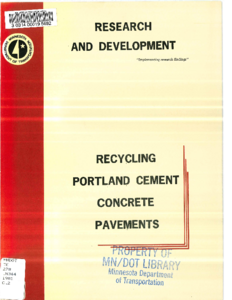Brochure: Use of Foamed Asphalt with Cold-in-Place Recycling and Full Depth Reclamation: Information on Implementation
Date Created
2009
Report Number
2009-09B2
Description
Brochure: Making the Most of Your Pavement Dollars
Date Created
2009
Report Number
2009-09B1
Description










